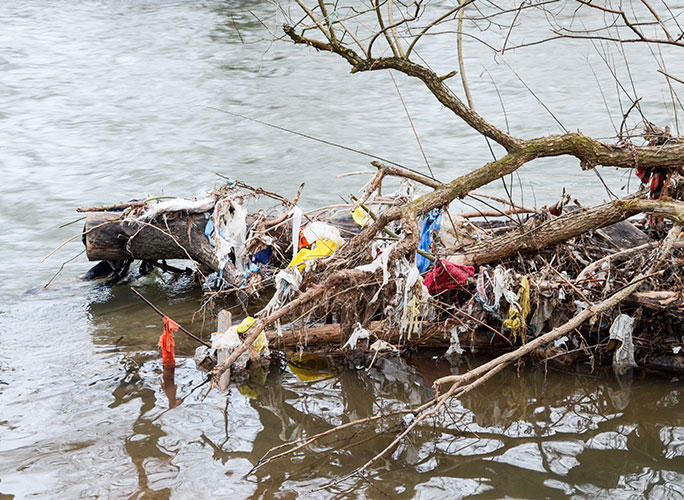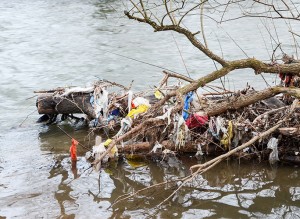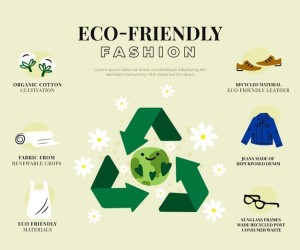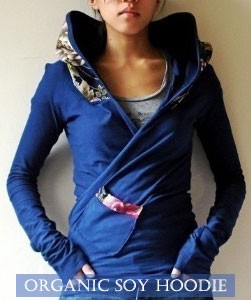Our great-grandparents and grandparents likely had few items of clothing and repaired the ones that they had. But the rise of mass-produced clothing, as well as the existence of shopping malls and then online shopping, changed everything. As a result, the fashion industry as it stands today has a pretty hazardous impact on the environment.
What is Fast Fashion?: Fast fashion brands pump out new products as they cycle through new trends every week. What is fast fashion? For example, when you suddenly notice belly shirts are everywhere and then they’re gone a month later: That’s fast fashion.
Fast fashion manufacturers often employ low-paid workers, including sweatshop labor, and use low-quality materials in order to churn out products quickly. Fast fashion leaves a negative environmental footprint because it is producing an excess of products, and also shipping those products far distances, using trucks, trains, planes, and ships that use fossil fuels.
Low-Cost Manufacturing: The low cost of manufacturing is passed on to shoppers. We’ll grab five pairs of underwear for INR 200 because it seems like such a good deal. But then those underwear fall apart after half a dozen washes and we’re back to the store buying more. This is how the fast-fashion cycle continues.
This method of production has an enormous cost to our environment and our lives. Clothing production approximately doubled from 2000 to 2015, according to a report on the textiles industry from the Ellen MacArthur Foundation. Unless those clothes are upcycled or are given a second life as hand-me-downs, they end up in landfills. Discarded clothing is the number-one textile that ends up in municipal solid waste (aka landfills), according to the Indian Pollution Control Board.
What fills our Landfills: Sixty percent of fabric textiles are synthetic and derived from fossil fuels according to “The Price of Fast Fashion and the Future of Clothes”, by Dana Thomas. The World Bank reports that fabric dyeing and treatment are responsible for 20 percent of wastewater worldwide, and the fashion industry as a whole contributes to 10 percent of global carbon emissions annually. Perhaps it is not a surprise that the fashion industry is the second-largest industrial polluter, second only to the oil industry.
In response to these troubling statistics, the fashion industry is making strides towards sustainability.
What Is Sustainable Innerwear? Sustainable underwear follows the same principles as sustainable fashion in general. Simply put, sustainable fashion is the opposite of “fast fashion.” Sustainable fashion is sometimes also called slow fashion. (Sometimes, however, slow fashion refers specifically to a movement to return to traditional craftsmanship.)
When shopping for sustainable underwear, here are a few things to keep an eye out for:
• Sustainable materials. From the textiles to elastics to eyelets, sustainable underwear uses responsibly-sourced materials.
• Organic textiles. These textiles are certified organic by an organization such as the Global Organic Textile Standard (GOTS). Organic cotton, for example, should have a low impact on the environment and not have been grown using toxic pesticides or fertilizers. Brands will often list their textile certifications alongside their product.
• Zero waste. Fast fashion manufacturing produces what’s called textile waste—the fabric that ends up on the cutting room floor. Typically that textile waste will go to a landfill. Sustainable underwear brands may use this leftover material, as well as re-purposed dead stock (inventory that didn’t sell).
•No polluting chemicals and dyes. Sustainable fashion aims not to treat clothing items with chemicals or use toxic dyes that end up in the wastewater. Brands will often list their certifications for eco-friendly dyes and printing alongside their product.
• Vegan. Not all sustainable clothing is vegan, but brands will say when they are. Vegan clothing uses no animal-based products like silk, leather, or wool. Instead, vegan clothing relies on cruelty-free fabrics, like vegan silk (made from citrus fruit!), vegan wool, and vegan leather.
• Fair labor practices/no sweatshop labor. Sustainable fashion aims to employ workers who are paid fairly and who labor in safe working conditions. Often brands will list their supply chain on their website, as well as reveal how frequently they visit production facilities.
MORE SUSTAINABLE FABRICS
The question that arises is which are the yarns and fabrics which are sustainable which are 100% biodegradable and which don’t harm our environment in this vicious cycle of water uptake, soil degradation, underground water pollution, and are non-degradable.
Well, we have given you an easy reckoner for any merchandiser on how to approach this topic. Needless to say, any synthetic yarn or fabric is not sustainable at all because
• LyocellFiber: also called Tencel, this 100% biodegradable fiber is produced in an environmentally-friendly manner from cellulose – the main material in plant cells. Counterpoint: potential health issues.
• Organic Cotton Fiber: cotton grown without the use of artificial chemicals such as herbicides or pesticides (additional information).
• Organic Hemp Fiber: a durable natural fiber that can be grown without pesticides and with minimal water use. The hemp plant has long roots which help to prevent erosion and retain topsoil (additional information).
• Organic-Linen Fiber: made from the organically-grown flax plant. The fiber is absorbent and cool to wear in various climates.
• Sasawashi: a very durable Japanese fabric made from paper and the plant Kumazasa, which has natural antibacterial and deodorant effects.
• Non-GMO Soy Clothing: “soy silk” or “vegetable cashmere” is made from soy protein which is a by-product of tofu manufacturing.
• Compassionate Clothing Guide: offers great vegan alternatives to commonly used animal-based fabric and accessories
• Organic Jute: a soft, strong, durable, and recyclable fiber, jute is the most affordable natural fabric and is usually blended with organic cotton



















